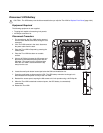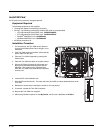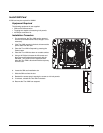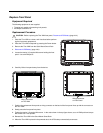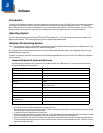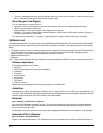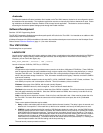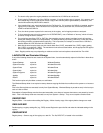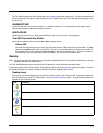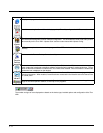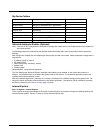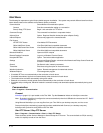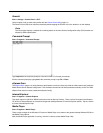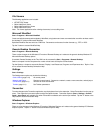
5 - 3
Avalanche
The Wavelink Avalanche Enabler installation file is loaded on the Thor VM2; however, the device is not configured to launch
the installation file automatically. The installation application must be run manually the first time Avalanche is used. Follow-
ing installation, the Wavelink Avalanche Enabler will be an auto-launch application. This behavior can be modified by
accessing the Avalanche Update Settings panel through the Enabler Interface.
Software Development
See Also: CE API Programming Guide
The CE API Programming Guide documents Honeywell-specific API calls for the Thor VM2. It is intended as an addition to Mic-
rosoft Windows CE API documentation.
A Software Developers Kit (SDK) and additional information about software development can be found on the Developer Portal.
Please Contact Technical Assistance (page 11-1) for more information.
Thor VM2 Utilities
The following files are pre-loaded.
LAUNCH.EXE
Launch works in coordination with registry settings to allow drivers or applications to be loaded automatically into DRAM at
system startup. Registry settings control what gets launched; see the App Note for information on these settings. For
examples, you can look at the registry key
HKEY_LOCAL_MACHINE \ Software \ LXE \ Persist
Launch will execute .CAB files, .BAT files, or .EXE files.
App Note
All applications to be installed into persistent memory must be in the form of Windows CE CAB files. These CAB files
exist as separate files from the main installation image, and are copied to the CE device using ActiveSync, or using a
Compact Flash ATA card. The CAB files are copied from ATA or using ActiveSync Explore into the folder System,
which is the persistent storage virtual drive. Then, information is added to the registry, if desired, to make the CAB file
auto-launch at startup.
The registry information needed is under the key HKEY_LOCAL_MACHINE \ Software \ LXE \ Persist, as follows. The
main subkey is any text, and is a description of the file. Then four mandatory values are added:
FileName is the name of the CAB file, with the path (usually \System).
Installed is a DWORD value of 0, which changes to 1 once auto-launch installs the file.
FileCheck is the name of a file to look for to determine if the CAB file is installed. This will be the name of one of the
files (with path) installed by the CAB file. Since the CAB file installs into DRAM, when memory is lost this file is lost,
and the CAB file must be reinstalled.
Order is used to force a sequence of events. Order=0 is first, and Order=99 is last. Order must be greater than 4 for
the Thor VM2. Two items which have the same order will be installed in the same pass, but not in a predictable
sequence.
There are two optional fields that may be added:
1. Delay is used to add a delay after the item is loaded, before the next is loaded. The delay is given in seconds, and
defaults to 0 if not specified. If the install fails (or the file to be installed is not found), the delay does not occur.
2. PCMCIA is used to indicate that the file (usually a CAB file) being loaded is a radio driver, and the PCMCIA slots
should be started after this file is loaded. By default, the PCMCIA slots are off on powerup, to prevent the “Uniden-
tified PCMCIA Slot” dialog from appearing. Once the drivers are loaded, the slot can be turned on. The value in
the PCMCIA field is a DWORD, representing the number of seconds to wait after installing the CAB file, but before
activating the slot (a latency to allow the thread loading the driver to finish installation). The default value of 0
means the slot is not powered on. The default values for the default radio drivers (listed below) is 1, meaning one
second elapses between the CAB file loading and the slot powering up.
The auto-launch process proceeds as follows:



